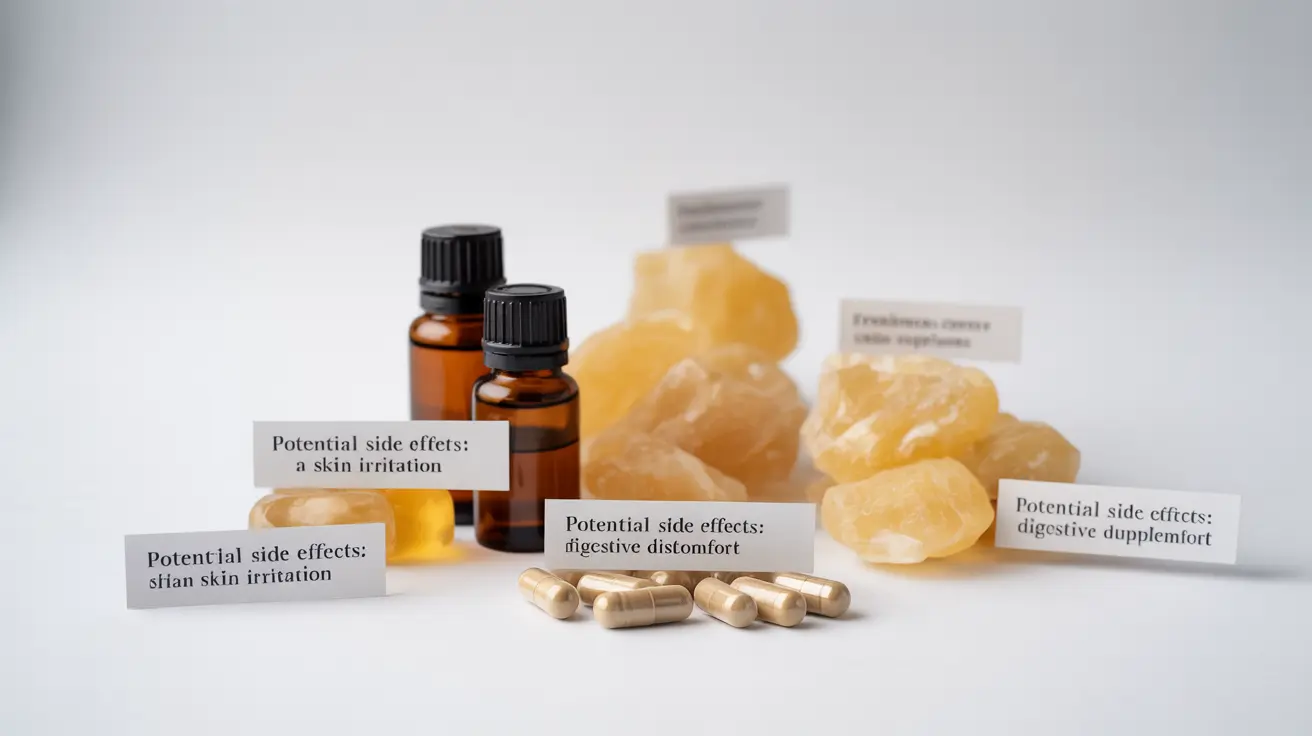Frankincense, an ancient resin derived from Boswellia trees, has gained popularity in modern natural medicine and aromatherapy. While many people seek its potential therapeutic benefits, understanding its side effects is crucial for safe use. This comprehensive guide examines the potential risks and safety considerations associated with frankincense use.
What is Frankincense and How is it Used?
Frankincense is available in several forms, including essential oils, supplements, and raw resin. Each form has specific applications, from topical use to aromatherapy and oral consumption. Understanding these different forms is essential for recognizing potential side effects and proper usage methods.
Common Side Effects of Frankincense
Topical Side Effects
When applied to the skin, frankincense may cause:
- Skin irritation or rashes
- Contact dermatitis
- Allergic reactions
- Increased skin sensitivity
Internal Use Side Effects
When taken orally, potential side effects include:
- Stomach discomfort
- Acid reflux
- Nausea
- Diarrhea
Special Populations and Risk Factors
Pregnancy and Breastfeeding
Pregnant and breastfeeding women should exercise particular caution with frankincense use. Limited research exists on its safety during these periods, and some forms may affect hormone levels or cross the placental barrier.
Pre-existing Medical Conditions
People with certain health conditions should consult healthcare providers before using frankincense, particularly those with:
- Bleeding disorders
- Autoimmune conditions
- Hormone-sensitive conditions
- Blood clotting issues
Safe Usage Guidelines
To minimize side effects and ensure safe use of frankincense:
- Always dilute essential oils properly
- Perform patch tests before topical application
- Start with minimal doses when taking supplements
- Store products properly to maintain their integrity
- Purchase from reputable sources
Drug Interactions
Frankincense may interact with certain medications, including:
- Blood thinners
- Anti-inflammatory drugs
- Hormone medications
- Some cancer treatments
Frequently Asked Questions
What are the potential side effects of using frankincense oil, especially for pregnant or breastfeeding women?
Pregnant and breastfeeding women should avoid frankincense oil due to limited safety data. Potential risks include hormone disruption and uterine contractions. Always consult a healthcare provider before use during pregnancy or breastfeeding.
How does frankincense compare to other natural remedies for reducing inflammation and pain?
While frankincense shows promise for inflammation reduction, it may have more side effects than some alternatives like turmeric or ginger. Its effectiveness varies by individual, and some people may experience digestive issues or allergic reactions not common with other natural anti-inflammatories.
Can frankincense be used safely alongside traditional cancer treatments?
The safety of combining frankincense with cancer treatments requires careful consideration. While some studies suggest potential benefits, interactions with chemotherapy or radiation are possible. Always discuss complementary treatments with your oncology team.
What are the benefits and risks of using frankincense for skin irritation or allergic reactions?
While frankincense may help some skin conditions, it can also cause irritation or allergic reactions in sensitive individuals. Always perform a patch test first and discontinue use if irritation occurs.
Is it safe to ingest frankincense or its extracts, and what are the recommended methods of use?
Ingesting frankincense should be approached with caution. Only use supplements from reputable manufacturers and follow recommended dosages. Essential oils should never be ingested unless specifically formulated and labeled for internal use under professional guidance.




